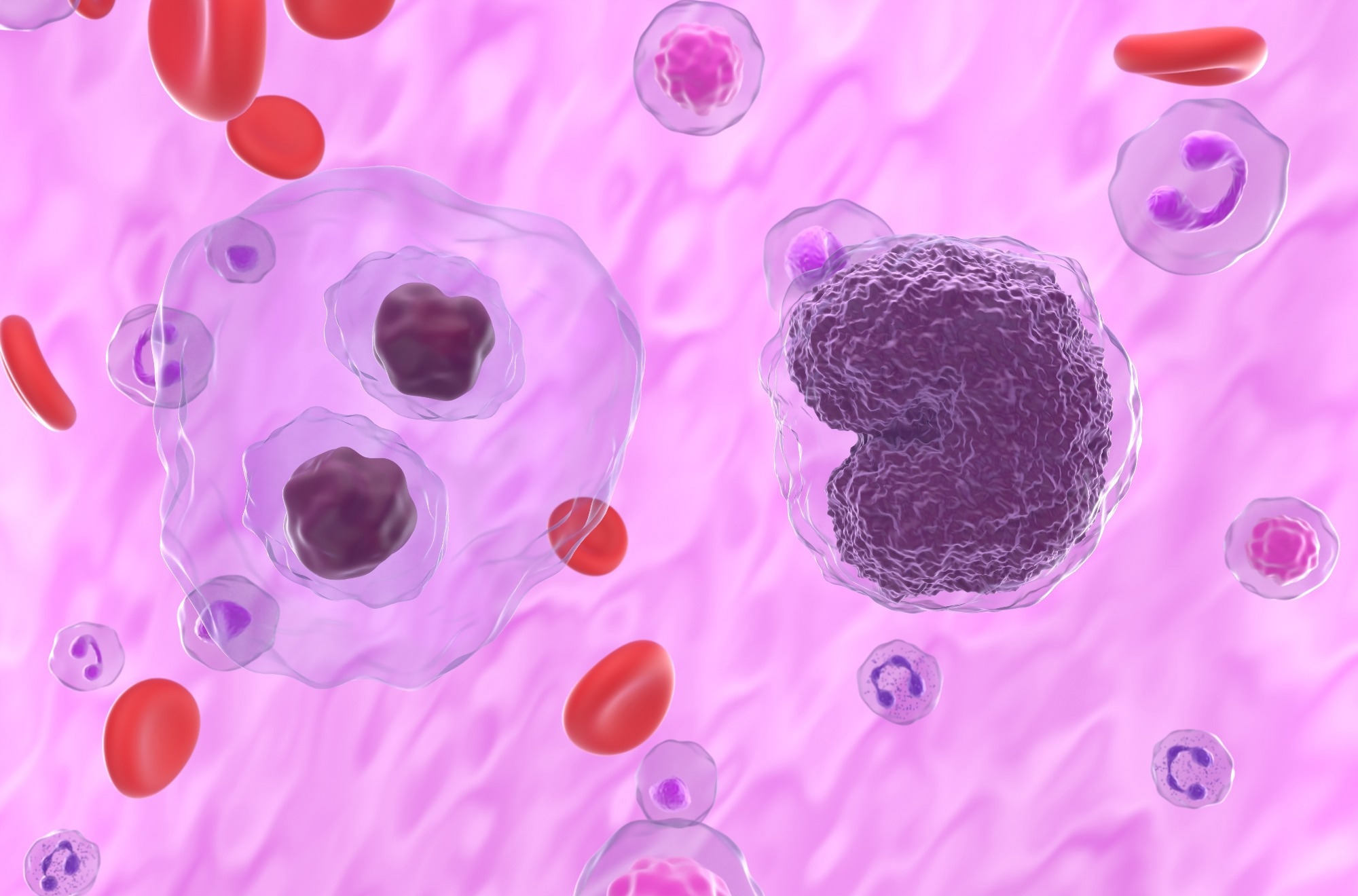In a recent study published in Current Problems in Cancer, researchers evaluated the impact of the severe acute respiratory syndrome coronavirus 2 (SARS-CoV-2) pandemic on the diagnosis and treatment of classical Hodgkin lymphoma (cHL) patients in Istanbul, Turkey.
 Study: Diagnosis and management of classical Hodgkin lymphomaduring the COVID-19 pandemic. Image Credit: Nemes Laszlo/Shutterstock
Study: Diagnosis and management of classical Hodgkin lymphomaduring the COVID-19 pandemic. Image Credit: Nemes Laszlo/Shutterstock
Studies have reported that hematological malignancy patients are highly prone to coronavirus disease 2019 (COVID-19) adverse outcomes such as disease severity, hospitalizations, complications, and deaths since they are usually immunosuppressed. Considering the elevated risk of severe SARS-CoV-2 infections among immunocompromised individuals and cancer-associated morbidity and death risks, hematological malignancy patient management has become challenging during the COVID-19 pandemic.
Several hospitals, focused primarily on COVID-19 care lockdowns, were introduced during the pandemic, as a consequence of which, evaluation of non-SARS-CoV-2-infected individuals was usually postponed. Hospitalizations due to non-COVID-19 illnesses were reduced due to patients fearing quarantines and SARS-CoV-2 transmission. However, delays in cancer diagnosis and management can be fatal.
About the study
In the present retrospective and single-center cohort study, researchers compared the symptom-to-diagnosis interval (SDI), the diagnosis-to-treatment (chemotherapy) interval (DTI), stages of cHL, and chemotherapy responses among individuals, diagnosed and managed for cHL in the pandemic and pre-pandemic-periods.
Ninety cHL patients, diagnosed and managed at the Cerrahpaşa Faculty of Medicine tertiary center in a three-year timeframe, were recruited for the analysis. The periods from March 2020 to March 2021, and from March 2018 to March 2020 were considered the pandemic and pre-pandemic periods, respectively.
Demographical, clinical, radiological, pathological, and treatment data of all cHL patients were obtained. The two groups of patients were comparatively evaluated for demographics, cHL characteristics including histological subcategories, EBV (Epstein-Barr virus) status, stage of cHL at diagnosis, cHL risk scores, the SDI values, DTI values, the first-line therapy distribution, interim and EOT (end of treatment) responses.
All cHL patients received ≥1 chemotherapy dose, with bleomycin, brentuximab vedotin (BV), doxorubicin-vinblastine-dacarbazine (AVD), or anthracycline. PFTs (pulmonary function tests) such as DCLO (diffusing capacity for carbon monoxide) and spirometry, and positron emission tomography-computed tomography (PET-CT) were evaluated intermittently and after every two treatment cycles.
The participants were categorized into a favorable initial stage, unfavorable initial stage, and advanced stage groups based on the German Hodgkin study group criteria. The IPS (international prognostic score)-3 and 7 were used for stratifying patients based on the advanced-stage cHL prognosis. The Deauville F-PS (five-point scale) was used for initial disease staging and treatment response assessments.
Results
The median age of the participants was 34 years, and most (53%) were men. In the study cohort, a neck mass was the most commonly reported (41%) cHL symptom; 61% of the participants had ≥1 B symptom, and 34% were EBV-positive. The most frequent histological subtypes were nodular sclerosis-type HL and mixed cellular-type cHL reported in 48% and 37% of the participants, respectively.
Early-stage and advanced-stage cHL was present among 43% (n=39) and 57% (n=51) of the participants, respectively. Extranodal (EN) involvement was identified in 49% (n=44) of cases, and the EN sites most frequently involved were the spleen, lungs, liver, and bone in 38%, 11%, 10%, and eight percent of cases, respectively. Bone marrow was involved in four percent of cases.
Of the cHL patients, 72% (n=65) and 28% (n=25) cases obtained cHL diagnosis in periods before and during the pandemic, respectively. During the pandemic and pre-pandemic periods, among early-stage cHL patients, the proportions of individuals with unfavorable cHL were 78% and 67%, respectively. The proportion of individuals having advanced-stage cHL was greater during the COVID-19 pandemic (64% versus 54%); however, the difference was not statistically significant.
No significant differences were observed between patients in the two groups concerning risks in initial-stage cHL, IPS-3 and 7 scores for advanced-stage cHL. The median for SDI values was significantly greater during the SARS-CoV-2 pandemic than during the period before the pandemic (16 weeks versus eight weeks).
In contrast, the median DTI values were comparable among both study group individuals (13 days versus 15 days). During the pandemic and pre-pandemic periods, 73% and 85% of the cHL patients showed CR (complete response) at EOT evaluation, respectively.
Overall, the study findings showed that SDI was prolonged significantly during the SARS-CoV-2 pandemic, with a greater proportion of cHL patients presenting with advanced-stage cHL during COVID-19, likely due to the SDI delay. However, the difference was not statistically significant in terms of response to treatment in the two groups.
Journal reference:
- Selin Kucukyurt, Kubra Sahin, Umut Yılmaz, Abdulkadir Ercalıskan, Tuba Ozkan Tekin, Damla Ortaboz, Tugrul Elverdi, Ayse Salihoglu, Muhlis Cem Ar, Seniz Ongoren, Zafer Baslar, Ahmet Emre Eskazan. (2022). Diagnosis and management of classical Hodgkin lymphoma during the COVID-19 pandemic. Current Problems in Cancer. doi: https://doi.org/10.1016/j.currproblcancer.2022.100913 https://www.sciencedirect.com/science/article/pii/S0147027222000733